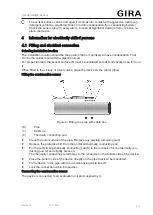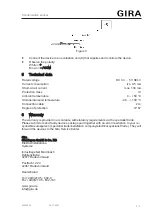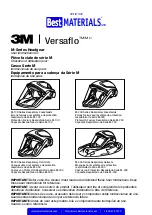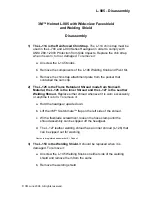
Condensation sensor
The sensor surface can be damaged if it comes into contact with aggressive media (e.g.
detergent solutions, scrubbing brines or acidic condensation from condensing boilers).
Check the sensor area (3) every alarm. In case of significant damage from corrosion re-
place the device.
4
Information for electrically skilled persons
4.1 Fitting and electrical connection
Selecting installation location
The installation location should be the position that is most likely to have condensation. That
can be the coldest spot within a pipeline circuit.
For proper function, the sensor surface (5) must be ventilated so that condensation can form on
it.
When fitted in the vicinity of mixer valves, place the device on the colder inflow.
Fitting the condensation sensor
Figure 2: Fitting to a pipe with cable ties
(6)
Pipe
(7)
Cable tie
(8)
Thermally conducting pad
■
Clean the outer surface of the pipe. Remove any existing remaining paint.
■
Remove the protective film from the enclosed thermally conducting pad.
■
Put the self-sticking thermally conducting pad (8) in the recession for the thermally con-
ducting pad (4) and slightly press on.
The thermally conducting pad adheres to the recession on the bottom side of the device.
■
Place the bottom side of the device directly on the pipe that is to be monitored.
■
Fit the device to the pipe with the accompanying cable ties (7).
■
Lock the connection cable into position.
Connecting the condensation sensor
The device is connected to an evaluation unit and supplied by it.
2 / 3
82595932
19.07.2021





















